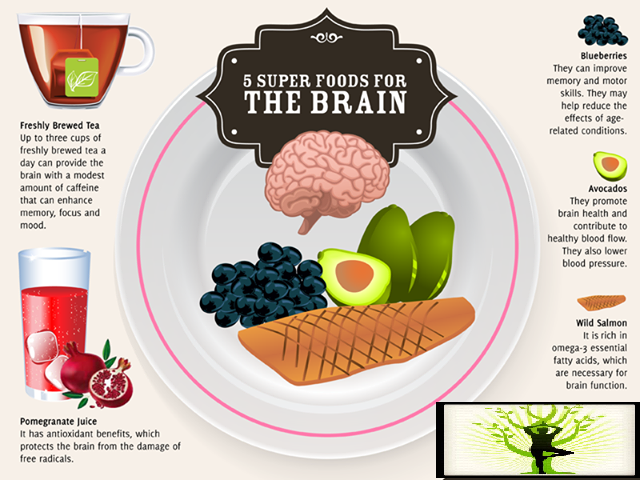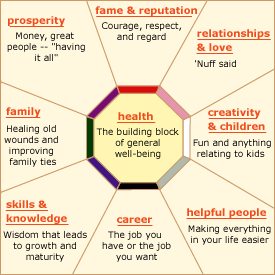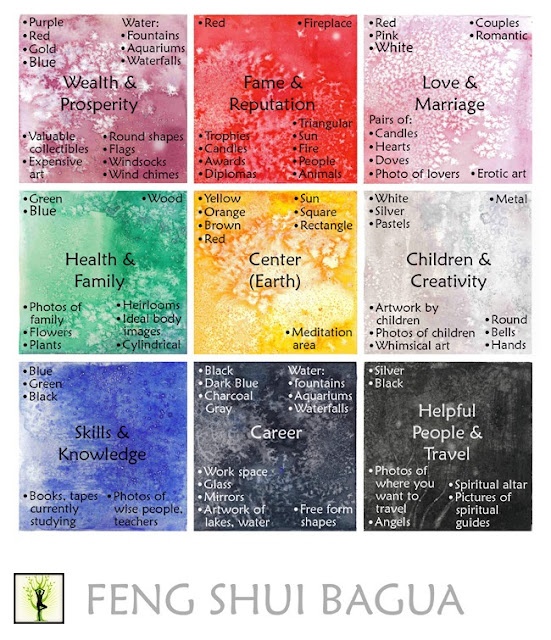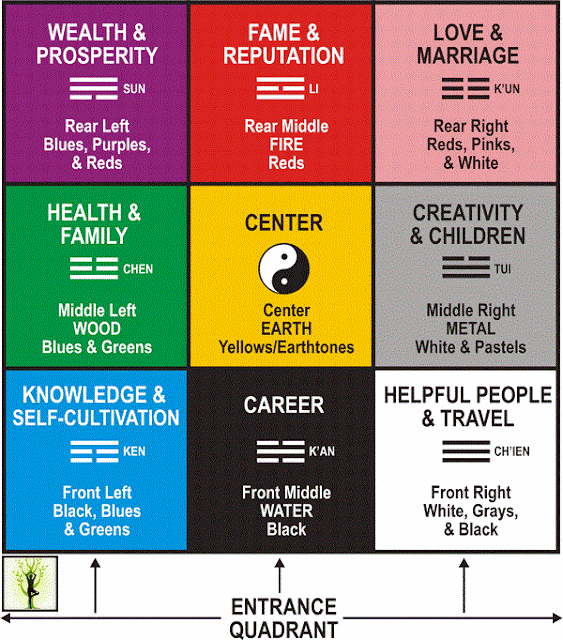Positive Healthy Life
Thursday, October 20, 2016
Sunday, September 8, 2013
Manage Your Anger In 4 Steps, Anger Management 10 Ways to Control
When does anger become a problem?
Anger is an emotion that everyone experiences at some point in their life. Anger in and of itself is not a bad thing. Anger becomes a problem when the anger itself, or how we express the anger, causes problems in our lives. For example, anger can be felt too intensely, too frequently, or it can be expressed inappropriately, leading to harm to oneself or to others. Poorly managed anger can result in damage to our mental health, physical well-being, social relationships, and employment.
When we feel angry, the most important consideration is how we manage this emotion. In many cases, we may manage anger in a similar way to people around us. Many children learn how to deal with anger from observing their parents and other family members. The way that we respond to anger may also be as a result of what happens when we become angry; it may help us to get things that we want, thereby reinforcing our behavior. There are many practical strategies which may be adopted to help overcome problems with anger management. Here are four tips on how to deal with anger:
#1 Make a list of events or situations that trigger your anger. It can be a helpful perspective to notice that each of us get triggered by different things – while some of us may get outraged by an inconsiderate roommate who leaves dishes in the sink, others may instead fume while driving in congested traffic. Having a better awareness of triggering events will help you to better manage and possibly prevent your anger.
#2 Take a timeout. Timeouts aren't just for kids – they are an essential anger management strategy that should be in everyone’s anger management “toolbox”. Basically, timeouts help us think instead of impulsively reacting in the heat of the moment. Timeout strategies can range from taking a few deep breaths and taking note of how your anger is experienced in your body, to leaving the situation that is causing the anger. You can have a pre-arranged agreement where any of the parties involved can call a timeout during an upsetting interaction and return to the conversation at a later point.
#3 Engage in Exercise! We all know that exercise is good for your physical health, but it’s also great for your mental and emotional health as well. Regular exercise can be an effective preventative anger management strategy. In addition to cardiovascular exercise, try yoga – either in live classes or through videos available on iPad apps and YouTube videos if live classes are too expensive.
#4 Use the A-B-C-D Model. The A-B-C-D Model (developed by Albert Ellis) helps us to change our underlying irrational beliefs that perpetuate our anger.
“A” stands for an activating event that triggers our anger.
“B” stands for our beliefs about the activating event. What do you tell yourself in reaction to the triggering event? What are your beliefs and expectations of others? For example, when a friend arrives late, you may tell yourself, “This friend is a bad friend. If he respected me, he wouldn’t be late. I can’t be friends with this person.”
“C” stands for consequences – emotional responses about the triggering event based on your self talk. For example, you may feel sadness or contempt.
“D” stands for dispute, where you examine your beliefs related to the event, identify any irrational beliefs, and dispute them with more rational or realistic ways of reacting to the activating event. The point of this model is to replace maladaptive self-statements that exacerbate anger with adaptive self-statements that reduce anger and help you have a more realistic reaction to the event.
While these tips may be helpful, you may need support from a counselor or mental health professional. Keep in mind that you don’t have to deal with anger all on your own. There are effective anger management therapies available in individual and group settings that can help you learn healthy ways of managing anger.
Saturday, September 7, 2013
Feng Shui Guidelines For Important Areas Of Home
Teaching Kids Gratitude & Generosity By Saying Thank You & Sharing
Let’s review some timeless parental guidance passed on to me by my wise Mom and Dad.
“Say Thank you”
I remember the excitement of getting Christmas gifts from my grandmother’s co-workers in addition to those from my parents and other family members. I’d open and shake each card, smile from ear to ear, set it aside and rush to rip open the next one. My mother would ask me, “Who gave you that gift?” I would never know because I had opened the card too quickly. My mother would make me collect every envelope that I’d impulsively ignored and sit at the dining room table to write thank you cards to every person who took their time and hard-earned money to be kind to me. The question “Do I have to?”crossed my mind (but not my mouth), and I’d write individual notes to each person. Eventually, I actually understood the joy that others received when reading my notes and the value of saying “thank you.” Thishank lesson helped me to understand and appreciate the generosity of others.
“Please take care of what you have.”
Moms and dads who demonstrate good stewardship and encourage their kids to do the same will eventually get good results. We forget that children have to actually be taught how to care for their things. There is no substitute for a parent who is a good example in the area where they want their child to grow. Explaining the value of stewardship and complimenting children when they take care of what they have helps to instill a sense of organization and responsibility. Kids who value what they have will one day become adults who do the same.
“Save your money if you want it.”
This old-school principle is time-tested and works wonders. There is something about paying for an object ourselves that makes us respect hard work and develop a proper appreciation for money. I will never forget that my first paycheck as a teenager went to pay for a dental retainer I’d lost. Although I first felt sad about “wasting” my money on a boring retainer, I also realized the lesson my parents wanted to teach me. When MY hard-earned cash went to replace something so mundane, I was sure to take better care of my belongings and recognize all that my parents provided for me.
“Share, serve, and give to others.”
I saved the most important advice for last; this one puts the previous three into perspective. Showing kids the significance of sharing your resources and serving others remind them that “wants” and “needs” are completely separate. Developing an attitude of service and generosity enhances our mental wellness. Teach your children and teens by being a role model and making service work and donating family traditions (volunteering together at shelters, participating in toy and clothing drives).
The Main Front Door - Feng Shui Guidelines For Important Areas Of Home
The Main Front Door
The first most important is the location of the main door. It should be in a GOOD location and facing a GOOD direction.
- The door is like our mouth. If you take good food, you will be healthy and well. If you take bad food you will fall sick.
- The door must open inwards.
- It should be well kept neat, tidy, painted and free of all hurdles.
- Do not block the movement of the door by placing a cupboard, for example, immediately behind it.
- It should not be directly opposite or facing the corners of wall or furniture.
- It should NOT directly face another door or window.
- A main door should not be opposite the main door of another house.
- You should NOT face a mirror as soon as you enter your house.
- There should not be a clock as soon as one enters a house.
- If there is a staircase inside the house, you must turn the last few steps.
- Main door facing stairs (going UP) is good. Main door facing stairs (going DOWN) is bad. Cure – Put bamboo tree beside the main door.
- If the main door facing another door. Cure – Put curtains or partition.
- There should NOT be any electrical poles, lampposts or trees erected in front of the entrance. Cure – Big earthen pot/ water in front of the tree. Tie red ribbon to the electrical poles, lampposts. Tie yellow ribbon to the tree. If a tree facing the house, then fix a 6/7 – rod wind chime. Structures in front of the house, put plants or paints the outside wall green.
- Split doors must be of equal width.
- There should be no exposed sewage grilles in front of the main door.
- A main door facing frequent and violent winds is also very unhealthy.
- The main door should not be directly opposite to the lift.
- Do not have main door and the back door in a straight line.
- Avoid having 2 separate doors on one wall.
- A solid wall at a distant from main entry is recommended, it will redirect the chi to different part of the house.
What Is Feng Shui And Bagua Map ?
Feng shui (pronounced "fung shway"), the Chinese discipline that teaches us how to attract and enhance our life energy (called chi) according to how our homes are arranged. But do you know how to put it to work for you?
You only need to know two things to get started:
What is a bagua and how do I use it? A bagua is a feng shui road map. It divides your home into nine sections (called guas) that correspond to the nine main areas of your life. The graphic below is a representation of a bagua. Your front door opens up into the skills & knowledge, career or helpful people gua. From there, you can divide your space up into nine parts and find each of your other guas.
The bagua is considered the "map of feng shui." It is designed to help you figure out which parts of your home correspond to each of the nine areas of your life.
How do I use it?
Each different colored area (or gua) corresponds with one of the life areas. To overlay the bagua on your home or work floor plan, stand at the threshold of the architecturally intended (not the one you happen to enter most often) front door facing in and hold the diagram so that the blue, black and gray guas are closest to you. Pretend you can draw a line straight across the front of the home where the door is: that would be the line at the bottom of this color chart. Now that you have the correct orientation, just divide your space up into nine guas as if you were cutting a square cake up into nine pieces. It helps to think of them as nine squares for this exercise -- like a little tic-tac-toe board overlaid on your house.
What if my front door isn't clear?A lot of people at this point feel that they can't go on because their door is at some strange angle or is confusing for some other reason. If you are confused about the front door, then just do each room individually using the door to that particular room as the starting point to overlay and orient the bagua.
I am Emphasizing on the Bagua Maps as this is the base of Feng Shui.
Monday, September 2, 2013
5 Practical Tips For More Refreshing Sleep
Sleep is an essential part of our lives. The effects of poor sleep can impact every aspect of our lives. Lack of sleep has been associated with problems at work, difficulties in relationships, medical and mental conditions, and an overall reduced quality of life. While some of these problems would benefit from a visit to your doctor, there are practical tips you can try for improved sleep. In this post on “sleep hygiene,” I discuss a useful set of practices for better sleep.
1. Resist coffee & other caffeinated drinks close to bedtime.
Caffeine is a stimulant and will keep you awake. Caffeine can be found in a range of products including coffee, tea, soft drinks, herbal supplements, and chocolate.
2. Don’t watch TV in bed.
Your body needs to associate your bed with sleep. Working, watching TV, or playing computer games in bed can disturb this association. This may lead to confusion for your body about what you want to do when you lie down in bed.
3. Keep your bedroom comfortable.
Make sure you have a suitable bed that’s comfortable; check the temperature of your bedroom; and remove any sources of bright lights or loud sounds. Bright lights close to bedtime can breakdown melanin, a chemical which helps to regulate the sleep-wake cycle.
4. Exercise!
Being physically active or exercising can help to tire you out so you fall asleep more easily. But you should not do any strenuous exercise right before bedtime because this may be counterproductive. If you want to exercise close to bedtime, try something relaxing like yoga.
5. Establish a sleep routine & stick to it.
Go to bed and wake up at the same times every night and day. Avoid daytime naps or staying up late and sleeping in on weekends.
If you've tried these tips and still struggle with sleep, you should talk to your Doctor.
Depression and anxiety can cause disturbances in sleep. Your primary care physician or a psychiatrist can help find a solution.
Subscribe to:
Comments (Atom)







